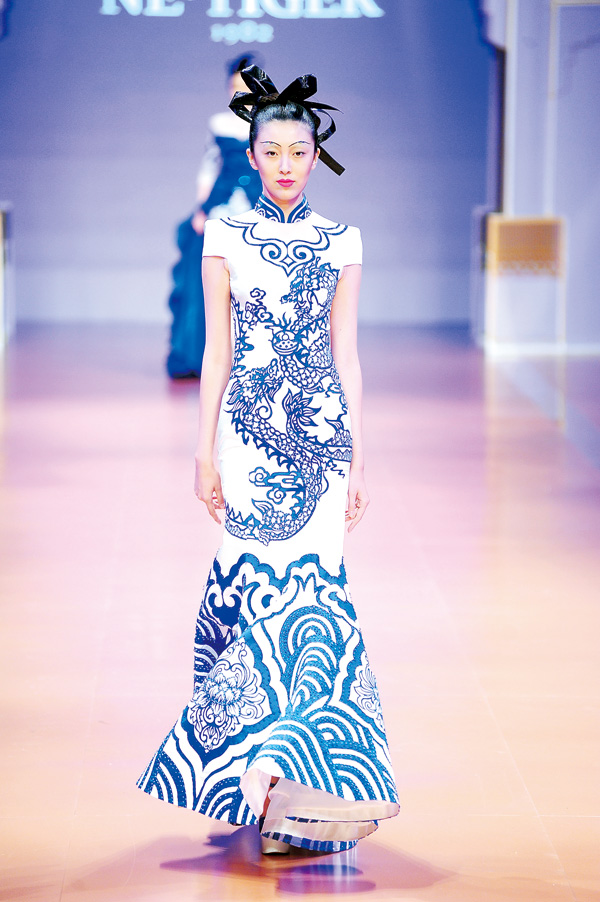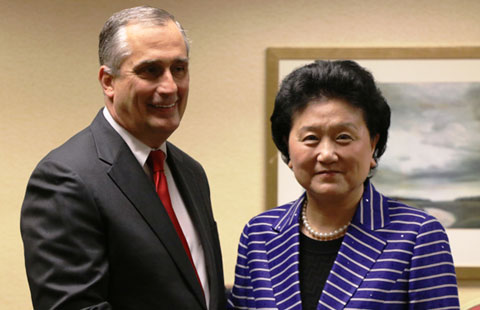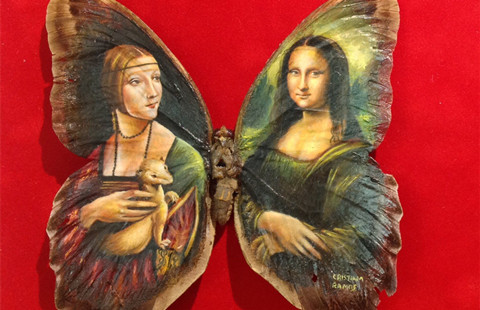Nothing says 'wow' like a made-to-measure qipao
Updated: 2015-06-19 11:31
By Zhou Wenting(China Daily USA)
|
|||||||||
 |
|
Qipao are designed to flatter the figure of Chinese women, offering a mixture of elegance and sensuality. Photos provided to China Daily |
It started as a heavy shapeless robe Manchu ladies wore, but it was in Shanghai that the modern figure-hugging qipao began its metamorphosis. It is getting popular again and Zhou Wenting tracks its journey back.
It was a dress that every Shanghai woman had in the 1930s and today, it remains a bride's must-have for her wedding day. After some twists and turns, qipao stands as an unspoken Chinese icon.
China's first lady Peng Liyuan prompted a continuous sparkle of camera flashes when she wore qipao-style dresses during her husband's State visits. Experts believe the so-called "Liyuan style" will stimulate the rejuvenation of the traditional garment.
"Few things portray a Chinese woman's beauty better than the qipao. A woman must be reserved and gentle to look perfect in the dress, and these traits are consistent with the Chinese identity," said Bao Mingxin, a retired professor from the Fashion and Art Design Institute of Donghua University.
Qipao best suits the Chinese female figure, Bao said. "It is demanding on the figure but women with slender curves wear it best. Those who are too big or too curvy may look funny in the dress."
Guo Pei, a designer of qipao for Miss Etiquette at the Beijing 2008 Olympics, said the traditional garment is very different from Western-style clothes. "Western dresses give shape to people of all dimensions, but the soft fabric of qipao only looks good on a certain figure," she said.
Qipao began to get popular in China in the 1920s. Experts believe it is derived from the Manchu robe in the Qing Dynasty (1644-1911), which was, however, wide, flat, and heavy, modestly hiding the figure.
The dress began its innovation in Shanghai and enjoyed a golden age in the 1930s after absorbing Western cutting skills. Folding was used at the chest and waist and set-in sleeves and shoulder seams made the dress fit perfectly.
Most Viewed
Editor's Picks

|

|

|

|

|

|
Today's Top News
More than 'greet'
and 'meet'
Liu Yandong meets Pittsburgh mayor
Innovation competition marks 10th anniversary
Obama suggests more gun control after shooting
Talks seen as prelude to visit by President Xi to US in September
The most costly cities for expats
House passes fast-track trade bill
Gunman kills nine people in South Carolina church shooting
US Weekly

|

|















